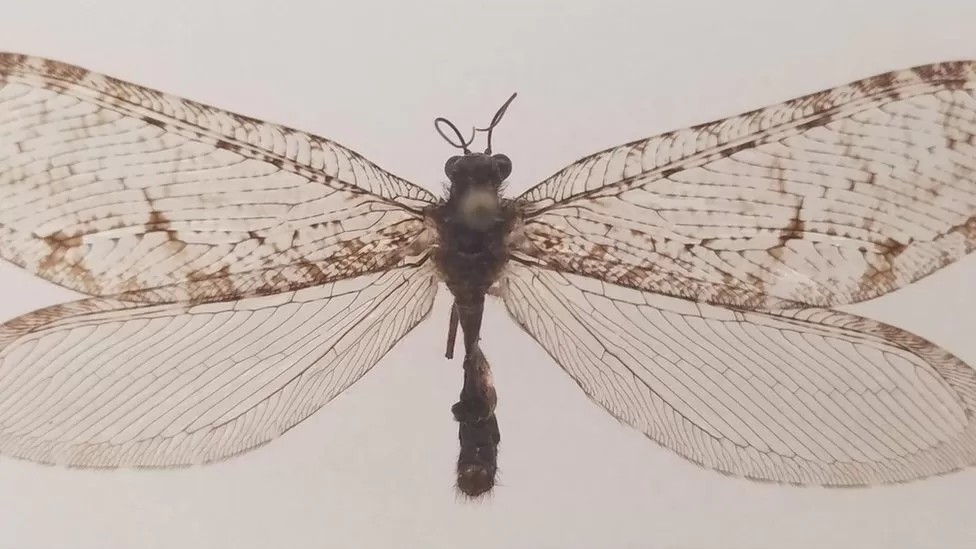
Scientists are buzzing with excitement after a rare discovery in Fayetteville, Arkansas. A giant Jurassic-era insect, Polystoechotes punctata, believed to have vanished from eastern North America at least 50 years ago, has been recently rediscovered — and it all started with an unsuspecting trip to Walmart.
In 2012, while still a doctoral student at the University of Arkansas, Michael Skvarla was walking into Walmart just as he had done countless times before on an errand to buy milk. But right before he entered the store, Skvarla, being the bug person he’s always been, was enchanted by the sight of a huge insect. He put it in his hand and went about his usual shopping with the bug carefully tucked between his fingers. He got home, mounted it in his personal collection, and quickly forgot about it.
That would have been the end of this, up to now, rather uneventful story were it not for a deadly pandemic and a class of quick-witted students.
In 2020, Skvarla, now a director of Penn State University’s Insect Identification Lab, was teaching an entomology class over Zoom during the lockdown. As he was going over microscope images of various insects with his students, Skvarla eventually showcased the Walmart bug, which left everyone flabbergasted with its enormous size, with a wingspan nearly five centimeters (two inches) across.
But as they discussed the morphological features of the insect, which Skvarla had previously incorrectly labeled in his personal collection as an “antlion“, the group eventually realized they were staring at an entirely different species — and a unique and special kind to boot.
The mysterious insect was, in fact, a giant lacewing (Polystoechotes punctata), a species that was abundant during the age of the dinosaurs but which was thought to have disappeared from large swaths of North America during the 1950s. It has been portrayed as resembling a cross between a fly and a moth, with mottled wings which it holds tent-like over its body.
“It was so gratifying to know that the excitement doesn’t dim, the wonder isn’t lost,” Codey Mathis, one of Mr. Skvarla’s entomology students at Penn State, said. “Here we were making a true discovery in the middle of an online lab course.”
The causes of the apparent disappearance of the insect have long been a mystery. Possible explanations include light pollution through urbanization and the introduction of non-native species such as ground beetles that prey on the lacewing or earthworms, which can change the consistency of soil.
“Entomology can function as a leading indicator for ecology,” Skvarla said. “The fact that this insect was spotted in a region that it hasn’t been seen in over half a century tells us something more broadly about the environment.”
But the new discovery — the first time such an insect has been observed in Arkansas — has now stoked speculation that there may be entire populations tucked away in remote parts of the Ozark mountains.
Now that the giant lacewing has been found in Arkansas, entomologists now have a glimmer of hope that more populations might have survived, evading detection and extinction. The valuable specimen has now been deposited at the Frost Entomological Museum at Penn State, where scientists and students will have access to it for further research.
“Discovery doesn’t always hold that same kind of grasp on people that maybe it did 100 years ago,” said Louis Nastasi, a doctoral candidate studying entomology at Penn State. “But a finding like this really highlights that even in a run-of-the-mill situation, there are still a tremendous number of discoveries to make about insects.”
The findings were reported in the Proceedings of the Entomological Society of Washington.






